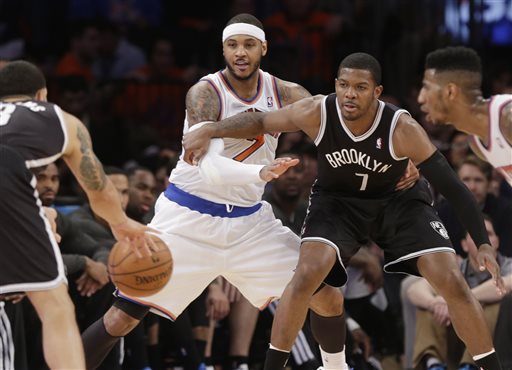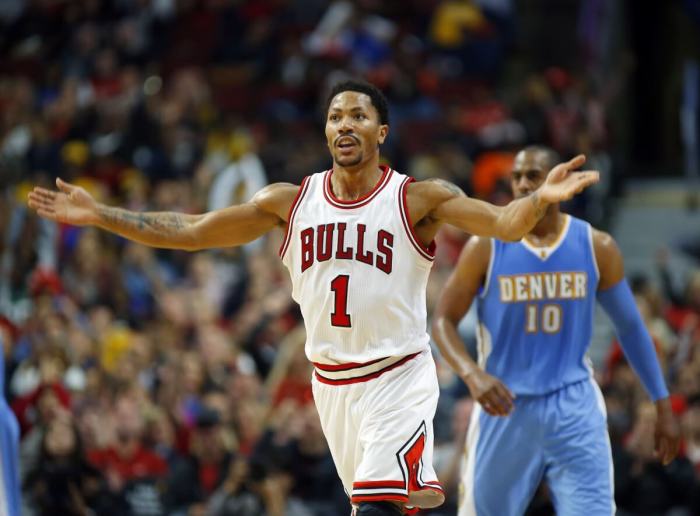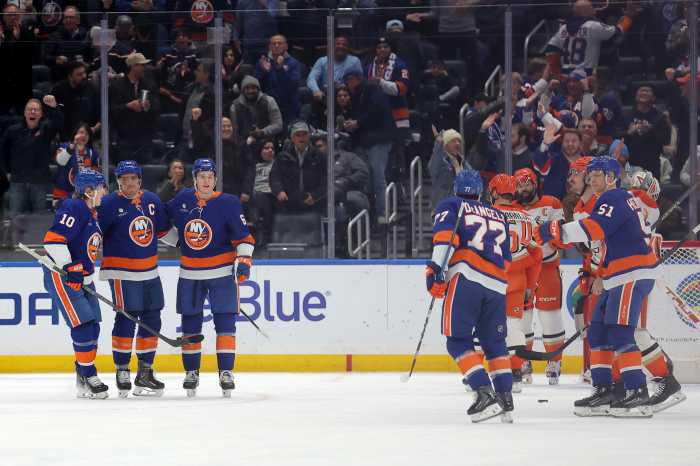In a practice session early this season, Kris Humphries lauded the success of the Chicago Bulls’ defensive strategy. The Bulls are what he calls a “blue” team; “they pack the paint” with defenders, Humphries said, in the hopes of pushing offenses to the corners, funneling slashers away from the basket and forcing opponents to beat them with difficult shots. To help make this possible, Joakim Noah and Taj Gibson are both quick and long enough to both contest shots at the rim and help out of position when the situation calls for them to leave the paint.
The Nets’ big man rotation is hardly Chicago’s. Starters Shelden Williams and Kris Humphries are slow-footed plodders, and the quicker of the two (Humphries) isn’t reactionary enough to make those immediate reads. Jordan Williams is a talented young player off the bench offensively, but still suffers from conditioning issues and is hardly a player built on quickness. Johan Petro is the worst of both worlds, both slow in foot and in reactions.
Nonetheless, the Nets attempted the same defensive strategy against Boston; keep them out of the paint as much as possible, push shooters and bigs out to the corners, and force them to beat you from those spots.
Unfortunately, they did.
Above is Boston’s shot chart from last night’s game, and as you can see, some of the plan worked; the Nets didn’t allow much success in the paint or general center of the floor, and threw enough bodies at the Celtics to stop them from finding much success in the paint. Sure, they got the occasional layup and dunk here and there, but for the most part, the Nets met the Celtics at the rim and in the paint, not allowing Boston to find quality shots in an area the Nets struggle to defend.
The issues came when a slicing Rajon Rondo or posted Kevin Garnett saw a collapsed defense and found a teammate for an open mid-range jumper or corner three-pointer. Avery Bradley’s three threes from the right corner in succession are as much a testament to that as the green spots in the chart above. Funnily enough, all three of Bradley’s three-pointers — the ones that pushed the game from 63-57 to 72-59 in under two minutes — came in three different defensive looks: man-to-man, transition defense, and “fist,” the Nets’ zone. In each occasion, a defender with room to guard Bradley attacked the paint when the offense attempted movement towards the basket, only to see Bradley wide open for the corner look.
What’s perplexing about this particular brand of defense is the team the Nets tried it on. Boston’s two starting big men, Kevin Garnett and Brandon Bass, do most of their damage outside of the paint anyway. In the aggregate, they’re a below average team at the rim and score less of their points in the paint than any potential playoff team except the Knicks. Bradley’s not known as a three-point shooter, but abandoning him three consecutive times for a player already covered seems foolhardy. Yet tonight, the Nets recklessly threw themselves in the way of paint-seeking players, even when one or two defenders already drew the assignment.
Was it a matter of personnel? Did Avery instruct the team to stay close to the paint? Did players instinctively dive towards the man with the ball (you may remember my TVD crusade earlier this season)? I’m more curious than anything; last night’s game got out of hand after Bradley’s nine quick points, but those points were potentially avoidable if not for a certain case of strategy. My best guess: the Nets, try as they might to impersonate the Bulls, simply don’t have the manpower. A solid effort overall, but the execution gap is enormous.
Statistical support for this story provided by NBA.com.



















